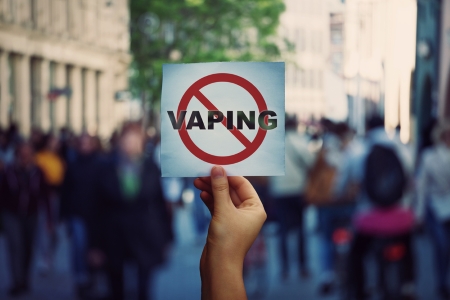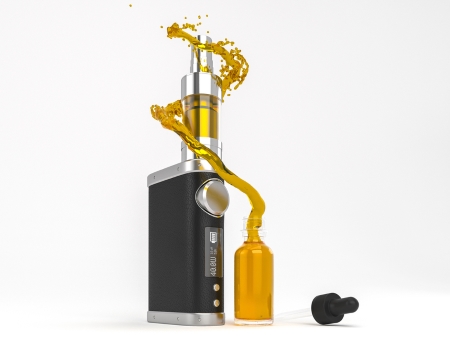Vaping alarms Australian doctors as well as American and European physicians. It is a twenty-first-century trend that got its marketing far ahead of its medical research.

In Australia, Vaping Alarms Doctors Just as It Does In the US.
Specifically, in Australia, pulmonologists and researchers are alarmed by a new product called 10,000 Puffs. “The emergence of vaping devices claiming to contain up to 10,000 puffs.
Additionally, it has prompted calls for health authorities to take urgent action. This is due to the alarming rate of “young people taking up the habit.”
Vaping has become increasingly trendy worldwide. And Australian teens have not been exempt. Doctors fear the use of vaping will cause chronic lung disease. Likewise, we at FLASS fear that 10,000 puff devices could “shorten the life spans” of normally healthy individuals.
Hot Report of Vaping Alarms from the Australian Medical Association of Queensland
Vaping products hit the youth market hard. As a result, “the Australian Medical Association of Queensland (AMAQ) has called on the governments to crack down on the vaping industry…”
Pulmonologists are the most concerned with the health of Australian youth, more specifically, the teenage sector of Australian society.
“Generation Vape” Alarms Australian Doctors
From the University of Sydney comes a report appropriately named “Generation Vape.”
The Quest
This Quest or research was headed by associate Professor Becky Freeman and the study researched more than “700 New South Wales teenagers aged between 14 and 17…”
Researchers sought to learn about the teenagers’ “experiences and perceptions of vapes.” In short, they wanted to discover what makes “Generation Vape” tick.
Results of the Research
Ultimately, “The researchers found 32 percent had used a vape…” Additionally, they also discovered that a third of the 32 percent “bought it themselves, from a friend, or from retailers like convenience stores or tobacconists.”
Vaping Alarms Doctors at FLASS

“10,000 Puffs” Lets You Maintain High Nicotine Levels All Day Long. No Wonder Vaping Alarms Doctors.
For our own research, here at Florida Lung, Asthma, and Sleep Specialists, we checked on 10,000 puff devices and found several sources of them readily available on the Internet.
Additionally, we saw reasonable pricing under 20.00 US. Dollars. And of course, this is well within a teen-agers budget.
So, why is a 10,000 puffs device more dangerous than the previously well-known, smaller devices? Dr. Freeman stated the danger and risk have come “after a decade of change in the devices.”
The result is that they “have become much more enticing to children.” She also stated that, of course, many devices contain “hundreds of puffs up to several thousand.”
She added, “Over the past 18 months, much larger devices have come on the market.” Her alarms for them included three main concerns.
1. She stated, “They have so much liquid in them, and so many puffs.”
2. An Additional concern is that “They’re also rechargeable,” Dr. Freeman said.
Thus, she explained, “When we compare that to cigarettes … a typical pack of cigarettes would say have 20 cigarettes inside, each cigarette which would have 10 puffs, that’s 200 puffs in a pack of cigarettes…”
Then, in startling contrast, she stated, “These disposable devices come with a recharging cable that you can plug in and keep using until you use up those 10,000 puffs.”
Vaping Alarms Compared to Smoking Alarms
In order to further explain, she gave an example of the sharp differences between people who vape and people who smoke. “When a smoker goes outside for a cigarette break, they have their one cigarette…”
Then she added, “Most likely they smoke it, they go back inside either to work or to their families, or the social situation they’re in.”
In complete contrast, “A vaper might use their product continuously throughout the day, taking in small puffs, using it to keep those nicotine levels up.”
More Results from Generation Vape
There was a notable correlation in the new Australian study. It revealed two sectors of young people and vaping preferences.
On the one hand, “younger users prefer devices with 100 to 200 puffs because they are cheaper and easier to conceal…” On the other hand, “the new high-puff volume devices are more popular with older teenagers and young adults.” Likewise, these are much harder to conceal.
Vaping Alarms: Not Only About the Nicotine

FLASS Recommends You Discuss Vaping With Your Child. Not Only High Schools but Primary Schools Are Experimenting Within.
AMAQ president Maria Boulton expressed concern about the said “the amount of nicotine and chemicals in vaping devices. She was especially alarmed about the devices containing “several thousand puffs.”
“Vapes are a highly unregulated industry, a lot of the time we don’t know what we find or what those vapes contain in them…”
In Australia, “The issue is that there are laws already in place that prohibit the sale of nicotine-containing vapes to people without a script…” However, “Somehow these vapes are still making it to the market.” Also, “they’re still making it to children and adolescents. I mean, this is just really, really serious.”
Why Vaping Alarms Australian Doctors
Dr. Burton listed specific details that are of concern. Vaping alarms are extensive. Globally, doctors see increasing seizures, lung injuries, lung burns, and chronic lung disease.
The AMAQ has demanded the state government establish a licensing regime for tobacco retailers. And, they also asked for methods to “properly enforce” existing regulations.
In another report, Health of Queenslanders, researchers revealed that between 2018 to 2022, “e-cigarette use among Queensland adults had increased by 40 percent.” Also, the largest increase in usage was among 18 to 24-year-olds.
Facts Behind Vaping Alarms in Australia’s Large City, Queensland
1. Last year, 19.7 percent of Queensland adults “had used an e-cigarette in their lifetime.”
2. More alarming is the 2017 survey from Australian Secondary Students’ Alcohol and Drug (ASSAD) Survey. It “showed 15.6 percent of Queensland school children 12 to 17 years had used an e-cigarette…”
Vaping Alarms Australian and American Doctors
A research study released in 2022 revealed that statistics were just as bad in America as in Australia, if not worse. Both the U.S. Food and Drug Administration and the U.S. Centers for Disease Control and Prevention (CDC) revealed that “2.55 million U.S. middle and high school students reported current usage in the (past 30-day) e-cigarette use in 2022…”
Breaking Down the E-cig Bad News in the US
1. This sad fact includes 14.1 percent of US high school students.
2. Even sadder, e-cig use includes 3.3 percent of middle school students.
3. Likewise, “85% of those youth used flavored e-cigarettes, and more than half used disposable e-cigarettes.”
Terrific Take-Aways from Vaping Alarms
Reading the results of the Australian studies and the facts from the CDC is critical to modern parents. Let us close this blog by suggesting that you talk to your children about vaping, its risks, and its dangers.
Vaping Alarms Parents Across the Globe
In Australia, parents and doctors are still appealing to their parliament for help in legislation. They hope to obtain legislation this August.
Although we in the US have obtained more help from Congress and the CDC, vaping is still a serious but hidden epidemic among our youth.
The doctors and staff of FLASS want parents to get the facts about vaping. Then we hope they will have a serious discussion with their children about its dangers to their undeveloped lungs and brains.
A Helpful List of Vaping Alarms

Vaping Alarms Doctors Because It Arrests Brain Development.
Below is a list of signs and symptoms of vaping. If you notice any of the following signs, be quick to talk “with your child about whether or not they are vaping.” This comes from the authorities at the American Lung Association.
- You might see unfamiliar technology, online purchases, or packaging.
- You could smell unusual, sweet scents.
It is likely you will notice behavioral and mood changes.
It’s possible your child will display “increased irritability or restlessness.” - A child who is vaping will often cut back on “other sources of caffeine.”
- Likewise, remember that physical signs of e-cig usage are sometimes pneumonia, increased thirst, and nosebleeds.
For more information about how vaping alarms doctors and parents check out one of our previous blogs.

